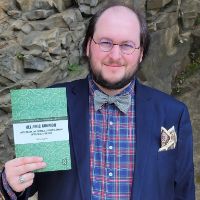Re-imagining Classical Monsters
A special issue of Humanities (ISSN 2076-0787).
Deadline for manuscript submissions: closed (31 October 2024) | Viewed by 6728
Special Issue Editor
Interests: drama; adaptation; world literature; British literature; ancient literature; performance; horror
Special Issues, Collections and Topics in MDPI journals
Special Issue Information
Dear Colleagues,
What scares us? Why do we sleep with the lights on? What creatures wait to grab a foot sticking out from under the covers? Why do we avoid the woods after dark?
This Special Issue of Humanities is themed on “Re-imagining Classical Monsters”. Across all cultures, there have been monsters that have terrified, taught, othered, and much more. This Special Issue will take a broad look at how modern authors and artists across genres conceptualize creatures—non-human as well as human—that haunt the imagination.
We are broadly defining all three of our key terms in an attempt to produce a wide-ranging and inclusive exploration. Re-imagining may be done through critical analysis of works of literature, art, theatre, film, TV, video games, or other genres. Classical includes everything from ancient world monsters like Lilith, Medusa, mogwai, yokai, ghuls, or frost giants, to iconic monsters from sources like Gothic literature or Universal monsters of the seventeenth to early twentieth centuries. And monsters encompasses not only traditional non-human creatures like those listed above, but also monstrous humans like Clytemnestra, Bluebeard, Vlad the Impaler, or Countess Bathory.
Some potential topics might include:
- Reception studies analysis
- Feminist revisions of monsters
- Queer revisions of monsters
- Postcolonial revisions of monsters
- Anti-racist revisions of monsters
- Monstrous psychology
- Social class/political economic analysis of monsters
- Historicist readings of monsters
- Ecocritical readings of monsters
- Body image/transformation/disfiguration
- Adaptations of fairy tales
- Adaptations of myths or legends
- Interactions between the human and the animal/non-human
Please be aware that Humanities does charge an article processing fee of CHF 1400 (Swiss Francs) for open access publication. Please inquire with your institution about whether funding exists to help cover the costs of publication. Otherwise, if this cost would be prohibitive, please contact Phillip Zapkin ([email protected]) to see what, if any, options exist for funding assistance on the part of Humanities.
Full length drafts of articles should be submitted through the Humanities website for this special issue by 31 August 2024 at the latest. However, Humanities publishes on a rolling schedule as soon as an article has made it through peer review, so earlier submissions are very much welcomed.
Any questions, comments, or concerns can be directed to Phillip Zapkin, the Special Issue Guest Editor, at [email protected].
Dr. Phillip Zapkin
Guest Editor
Manuscript Submission Information
Manuscripts should be submitted online at www.mdpi.com by registering and logging in to this website. Once you are registered, click here to go to the submission form. Manuscripts can be submitted until the deadline. All submissions that pass pre-check are peer-reviewed. Accepted papers will be published continuously in the journal (as soon as accepted) and will be listed together on the special issue website. Research articles, review articles as well as short communications are invited. For planned papers, a title and short abstract (about 100 words) can be sent to the Editorial Office for announcement on this website.
Submitted manuscripts should not have been published previously, nor be under consideration for publication elsewhere (except conference proceedings papers). All manuscripts are thoroughly refereed through a double-blind peer-review process. A guide for authors and other relevant information for submission of manuscripts is available on the Instructions for Authors page. Humanities is an international peer-reviewed open access semimonthly journal published by MDPI.
Please visit the Instructions for Authors page before submitting a manuscript. The Article Processing Charge (APC) for publication in this open access journal is 1400 CHF (Swiss Francs). Submitted papers should be well formatted and use good English. Authors may use MDPI's English editing service prior to publication or during author revisions.
Keywords
- monsters
- horror
- adaptation
- reception
- literature
- art
- film
- television
- theatre
- drama
Benefits of Publishing in a Special Issue
- Ease of navigation: Grouping papers by topic helps scholars navigate broad scope journals more efficiently.
- Greater discoverability: Special Issues support the reach and impact of scientific research. Articles in Special Issues are more discoverable and cited more frequently.
- Expansion of research network: Special Issues facilitate connections among authors, fostering scientific collaborations.
- External promotion: Articles in Special Issues are often promoted through the journal's social media, increasing their visibility.
- e-Book format: Special Issues with more than 10 articles can be published as dedicated e-books, ensuring wide and rapid dissemination.
Further information on MDPI's Special Issue polices can be found here.





